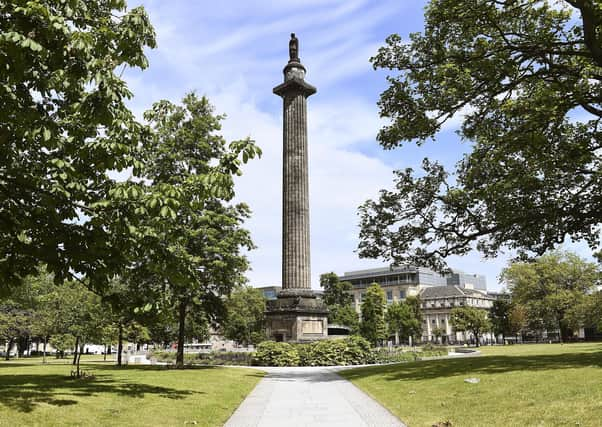Christine Jardine: ‘This must be our moment for change. We must do more’


Thirty-four years ago at the height of the anti-apartheid campaign St George’s Place became Nelson Mandela Place. A simple change which sent an unmistakable message to the South African regime.
It was not the first time that Glasgow had honoured the future president while he was still a prisoner on Robben Island. Five years earlier he had received the Freedom of the City.
Advertisement
Hide AdAdvertisement
Hide AdHowever it was the later move that had the greater and continuing impact as it forced the South African Consulate to announce on every letter head that its address was Nelson Mandela Place.
I smile every time I think of it. And I appreciate now that the spotlight it threw on the issue helped educate me, and my generation of the reality of apartheid. It is without doubt an association for that city to be proud of. But has it clouded my view?
Suddenly I wonder why it has not been followed by a widespread high profile and successful campaign to sever the very different connections of so many features of the surrounding urban landscape both there and across Scotland.
Glasgow’s street names reek of a colonial past: Jamaica Street, India Street, Tobago Street. And scattered liberally amongst them, are streets and monuments dedicated to men whose wealth was built on that most shameful of businesses. Slavery.
And it’s a shame not confined to Glasgow. In Edinburgh our self- examination has focused on one of the capital’s most striking statues.Henry Dundas. A man who used his position as Home Secretary to frustrate the abolition of slavery for 15 years.
And amongst the arguments that have raged this week, about our statues, street names, and eponymous buildings, there is a question that I cannot get away from.
How has it taken centuries for us to recognise and address the fact that we have allowed our towns and cities to be adorned with celebrations of an offence to humanity?
Even although black activists have been raising this for decades.
Advertisement
Hide AdAdvertisement
Hide AdI don’t think it is enough to try to excuse it by saying that we didn’t know who these people were or what they had done. Or to suggest that we should accept it because they were different times.
No. These are the times in which we live and in which society has somehow expected our friends, neighbours, colleagues and loved ones to spend each day surrounded by symbols of those who would have had them flogged and sold.
To endure the pain of walking past reminders.
Everywhere.
In reality they should be reminders to all of us, and not solely of the historic offence but also of the modern insult.
This must be our moment for change. To make amends for a wrong that cannot be completely undone.
And it will not be enough to simply keep reciting that slavery was wrong or that Black Lives Matter.
Both statements are self-evidently true and undeniable. Neither will it be enough to remove the offensive symbols from view.
If we are to learn the lessons of our history we have to be reminded, and constantly.
We have to shift the balance so that the physical evidence of our heritage ceases to be a memorial or celebration of those who grew rich from it, and be dedicated instead to those who were its victims.
If we are in need of an example we could look to Poland.
Advertisement
Hide AdAdvertisement
Hide AdAuschwitz-Birkenau was a complex of concentration camps where more than a million people lost their lives during the Second World War. It’s name is synonymous with evil.
Today it stands as a potent reminder of the 20th century’s greatest wrong and the millions of lives it claimed.
It is not enough on its own but it is part of the process of educating successive generations about a past that must never be repeated.
It is surely time that we did the same in Scotland to acknowledge our ancestors’ part in slavery and our own in showing scant recognition of it.
Museums can be wonderful enlightening and informative places. But you have to make the effort to visit.
Too many of us don’t.
For centuries now the statues and monuments to the beneficiaries of slavery have been part of the furniture of our lives, regardless of the impact they had.
Being white, I cannot imagine what it would be like to be a black child in a city where the streets you walk each day are dedicated to the men who would have regarded you as less.
Think about being that curious child and reading about the man whose likeness in stone rises above that street, only to discover he delayed the end of a practice that would have denied you liberty and treated you as a possession.
Advertisement
Hide AdAdvertisement
Hide AdI cannot claim to understand because it has not been my world, or my experience.
What I can say is that I shall continue to learn.
What we need to do as a society I believe is to recognise the abject pain and ask what to do next. Edinburgh city council’s reaction this week was to announce a plaque to be placed on the statue of Henry Dundas explaining that his actions led to half a million people crossing the Atlantic in enslavement.
The plaque and his monument will now be dedicated to their memory.
It is a start.
But we must do more. Because until now we haven’t really tried at all.
Comments
Want to join the conversation? Please or to comment on this article.